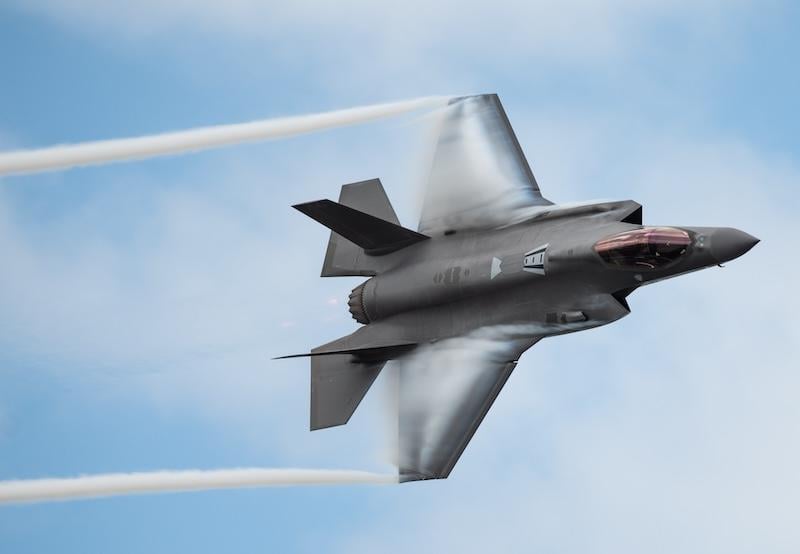Honeywell Preparing Derivative, Clean-Sheet Designs For F-35 Upgrade
Details
More Products & Services
Products & Services
Aerospace | Aviation Week Network
Aviation Week Network
https://aviationweek.com/themes/custom/particle/dist/app-drupal/assets/awn-logo.svg
Home - Aviation Group Marketing
Aviation Week Network
120 data points on over 156,000 commercial and business aviation aircraft, including military transports. Discover the most trustworthy resource for the complete aircraft history, plus ad hoc reports, month-over-month trend analysis and details on expected deliveries through 2050.
People

Andrea Rossi Prudente
Aviation Week Network

Anthony Lim
Aviation Week Network
Sales director

Becca Balmes
Aviation Week Network

Belinda Tan
Aviation Week Network

Brian Everstine
Aviation Week Network
Editor

Eddie Krankowski
Aviation Week Network
Assistant Manager, Tradeshows

erving dockery
Aviation Week Network

Lisa Tan
Aviation Week Network
Senior Marketing Manager

Mark Thomas
Aviation Week Network
Description
LE BOURGET—Honeywell could offer a modified or an all-new power and thermal management unit (PTMU) to replace the company's Integrated Power Package (IPP) on the Lockheed Martin F-35, a company executive told Aviation Week here on June 17.
The incumbent supplier is working on both proposals as part of a two-year analysis of alternatives that Lockheed kicked off at the end of last year, said Lori Schneider, Honeywell's vice president of defense OEMs.
Both proposals would replace the 32-kW cooling and heat rejection capacity of the current IPP with a PTMU capable of 60-80 kW. Honeywell is competing for the potential upgrade program against the Collins Aerospace Enhanced Power and Cooling System (EPACS) and another supplier that has not been named.
Lockheed's two-year analysis will conclude with a recommendation, which will be submitted to the F-35 Joint Executive Steering Board to make a decision on which path to follow.
For Honeywell, a modification to the existing IPP would come in two parts. A software change could expand the capacity of the IPP to manage 25% more waste heat, with the limit rising to 40 kW, Schneider said. The second part would involve hardware changes, including new types of heat exchangers.
A decision to replace the IPP with a clean-sheet PTMU would be more complex, Schneider said. In addition to providing the engine start and back-up power generation capabilities of a traditional auxiliary power unit, the turbine-based system has 12 other functions, including pressurizing the cockpit.
“Every other aircraft has a more standalone [approach] with an environmental cooling system, thermal management, auxiliary power, emergency power as federated subsystems,” Schneider said. By contrast, the F-35's IPP combines “all of those core subsystems in one integrated system. So you're kind of trying to replace a one-of-a-kind circulatory system with something new.”
The incumbent supplier is working on both proposals as part of a two-year analysis of alternatives that Lockheed kicked off at the end of last year, said Lori Schneider, Honeywell's vice president of defense OEMs.
Both proposals would replace the 32-kW cooling and heat rejection capacity of the current IPP with a PTMU capable of 60-80 kW. Honeywell is competing for the potential upgrade program against the Collins Aerospace Enhanced Power and Cooling System (EPACS) and another supplier that has not been named.
Lockheed's two-year analysis will conclude with a recommendation, which will be submitted to the F-35 Joint Executive Steering Board to make a decision on which path to follow.
For Honeywell, a modification to the existing IPP would come in two parts. A software change could expand the capacity of the IPP to manage 25% more waste heat, with the limit rising to 40 kW, Schneider said. The second part would involve hardware changes, including new types of heat exchangers.
A decision to replace the IPP with a clean-sheet PTMU would be more complex, Schneider said. In addition to providing the engine start and back-up power generation capabilities of a traditional auxiliary power unit, the turbine-based system has 12 other functions, including pressurizing the cockpit.
“Every other aircraft has a more standalone [approach] with an environmental cooling system, thermal management, auxiliary power, emergency power as federated subsystems,” Schneider said. By contrast, the F-35's IPP combines “all of those core subsystems in one integrated system. So you're kind of trying to replace a one-of-a-kind circulatory system with something new.”

Share
Recent Chats
Share via email
Future: handle WhatsApp here
Future: handle LinkedIn here
Future: handle Twitter here
SUBMENU HERE
Share via Chat
Copy Link

